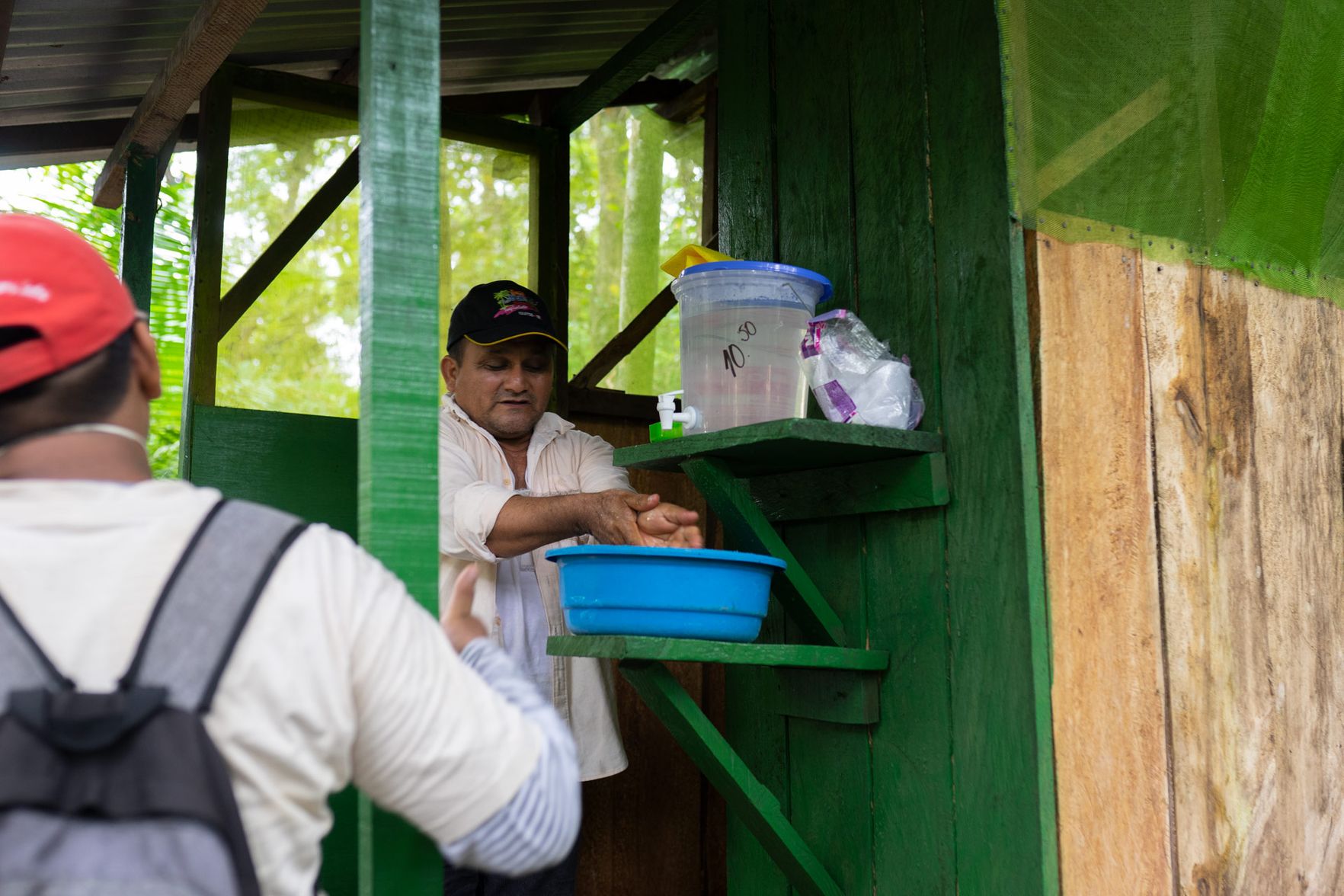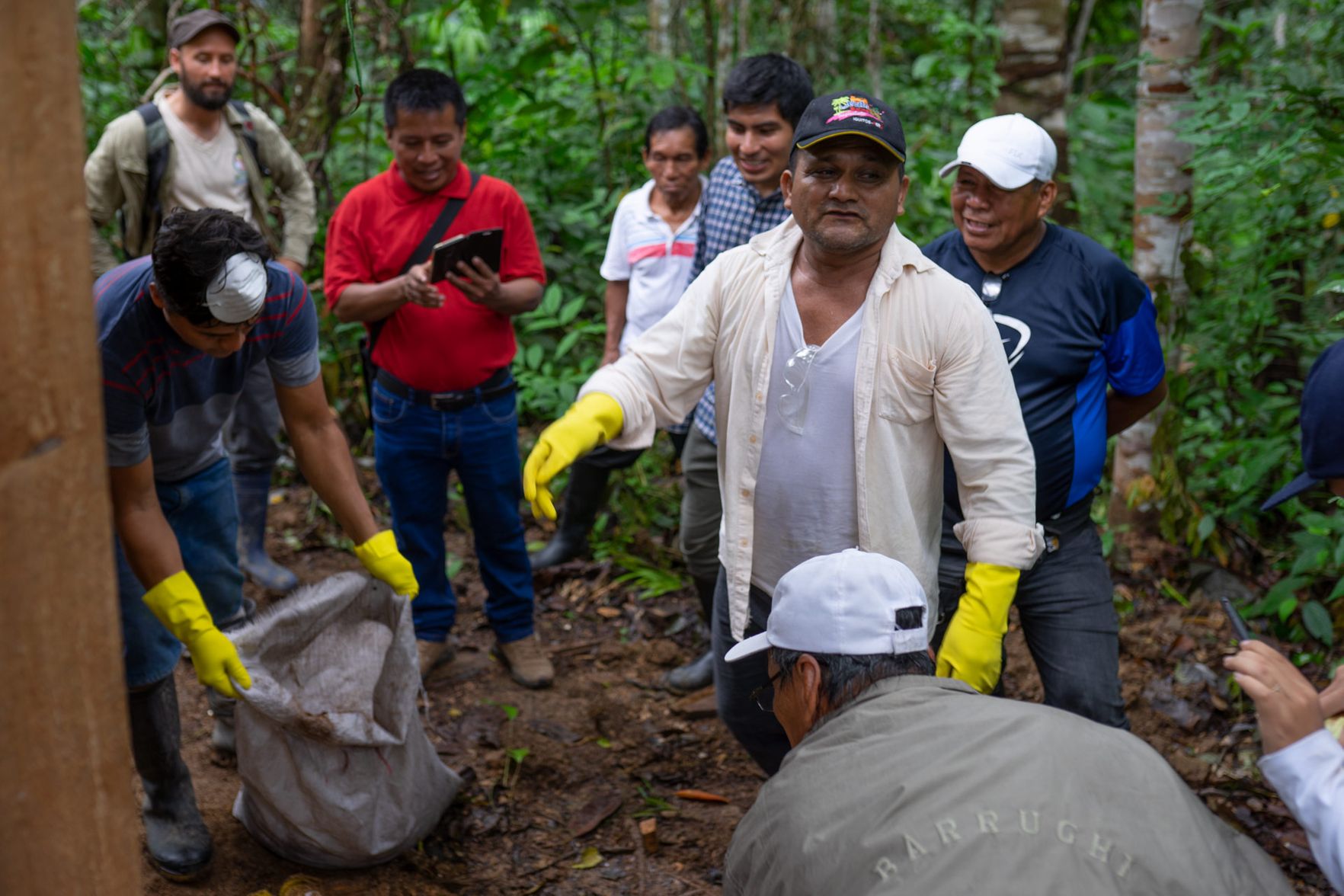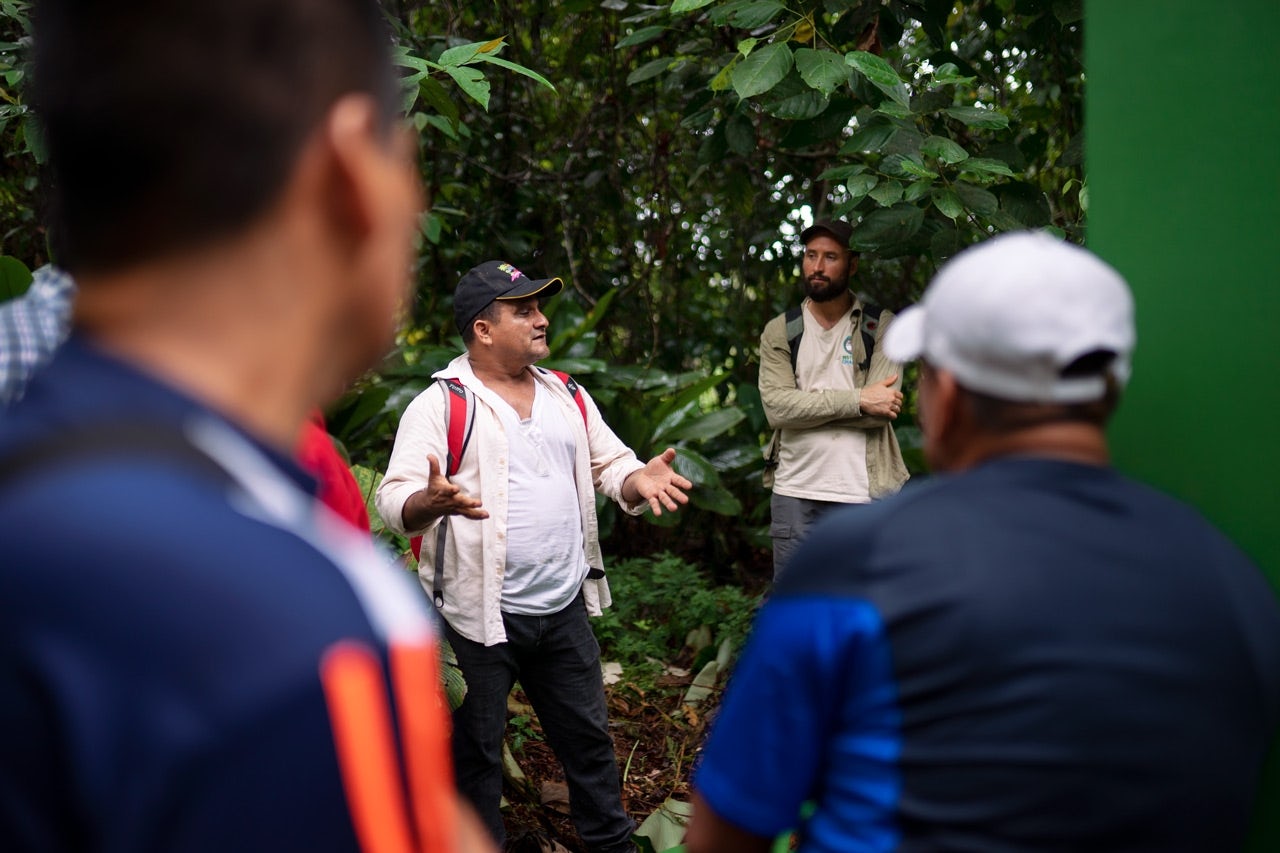By
After more than four decades of petroleum exploitation in the Loreto region, communities on the petroleum circuit remain some of the poorest and most insufficiently attended people of Peru for both geographic and socio-economic reasons. A lack of access to basic resources such as safe drinking water and sanitation is a situation women and men of all ages confront daily.
On March 10th, we received a committee of indigenous leaders and professionals from the Ministry of Housing, Construction and Sanitation, to visit and learn about our model of dry composting toilets and how it might be a lasting solution to be “exported” to indigenous communities affected by oil extraction and its adverse impacts.
Below, Alan Chumbe, our permaculture expert, explains the “dry toilet” system, and how this method isn’t only sustainable, but can also have a positive impact for the environment by enriching soils to cultivate food, medicinal plants, and hardwoods useful for Amazonian communities.

An economic alternative for the people. A powerful idea in partnership with nature.
A 2011 estimate claims that in Peru, adequate sanitation services reach 66.2% of the population, while in rural areas they reach just 9.4%. Due to a lack of government support, rural communities commonly opt-in for a sanitation system known here as “pozo ciego” (‘blind well’ or simply a hole in the ground), without taking into consideration many other aspects than the availability of land to build it and the well-being of the family. The main reasons behind the widespread use of these “pozos ciegos” as toilets are likely that they are cheap, don’t require a large investment and are easy to build (the construction consists of digging a 3-meter-deep hole and covering it with a wooden structure and a tin roof).

Typically, these ‘blind well’ toilets are located far from the house (from 10 to 30 meters) due to bad odours, and to avoid the presence of flies which are attracted to the odours. At the moment, people have not found a way to avoid surface and subterranean waters from becoming contaminated due to the presence of these toilets.
There is also a false perception that this system isn’t harmful to people or for the environment – this couldn’t be farther from the truth. Those most impacted from these structures are the owners of the toilets and their families, due to the infectious diseases that the unhygienic nature of these toilets can cause. These structures also tend to cause conflicts with neighbours who experience bad odours stemming from the toilets, causing conflicts within communities. Another frequent issue with this system is the distance people have to travel to go to the toilets, frequently exposing themselves to dangers like snake bites, spiders, mosquitos (which can carry dengue or malaria), inclement weather, and so on.
Faced with this situation, the Chaikuni Institute is supporting the implementation of dry composting toilets as an economically feasible and environmentally friendly alternative which can have a real, positive impact on the livelihood of Amazonian communities.

The dry toilet is constructed using a wooden platform 2 meters x 2.5 meters with wooden walls 3 meters in height, covered with corrugated metal sheets. The wooden ‘floor’ of the dry toilet is located 80 cm above the ground. This way, the space between the ground and the platform turns into a drying chamber divided into two boxes or compartments. The compartments are used and filled with ‘humanure’ separately for a period of 6 months each. The construction of the drying chamber is directly on the earth, with two doors in the rear part to take out the humanure. To support the aerobic fermentation process (and to avoid bad odours) we place a PVC pipe with 4 holes on the top part which ventilates the holds.
To construct these dry toilets we partner with the local population. The Chaikuni Institute is committed to providing technical assistance during the construction process, as well as monitoring until we are sure that the communities have assimilated and adopted the system. On their part, the community provides the materials (boards and slats of wood, roofing, sacks, sawdust, etc). Constructing 1 dry toilet using the dimensions we outlined requires half a day of work with the participation of 4 people.
After 6 months, the material which we extract from the boxes can be reused like sawdust or as organic fertilizer.
Bibliography:
- Autoridad nacional del agua, 2013. Situacion actual y perspectivas en el sector agua y saneamiento en el Perú. Lima, Peru. 7 p.
If you want to learn more visit our Permaculture Program section.

